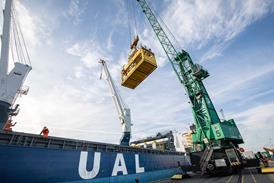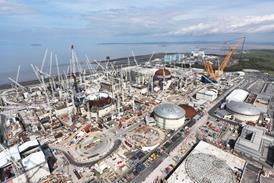DNV’s latest Maritime Forecast to 2050 charts practical ways for the shipping industry to comply with current and possible future decarbonisation trajectories.
The forecast, which can be found here, aims to assist shipowners in choosing designs for tomorrow’s ships that will run on carbon-neutral fuels.
The energy transition is well underway. Nearly an eighth (12 percent) of current newbuilds are ordered with alternative fuel systems, double the percentage reported in the 2019 edition of DNV’s Maritime Forecast to 2050.
Although liquefied natural gas (LNG) dominates current use of alternative fuels, 10 methanol-powered ships are in operation and 28 are on order (as of September 1, 2021). Hydrogen is in limited use for some smaller vessels such as ferries, DNV reported.
When it comes to fuel systems that can facilitate the use of such carbon-neutral fuels, fuel cells are being researched and developed. However, DNV said that this technology is much less mature than internal combustion engines for fuelling ships, whatever the fuel type. Other emerging technologies include onboard carbon capture and storage (CCS) to decarbonise vessel emissions.
In a glimpse of other, longer-term fuel futures, DNV pointed to Wallenius Marine and Alfa Laval’s partnership to jointly develop and realise the former’s Oceanbird “wing sail” technology for fully wind-powered vessel propulsion, which HLPFI reported on here.
DNV’s Maritime Forecast to 2050 also offers practical advice and solutions to help keep newbuilds and the existing fleet competitive over their lifecycles.
To achieve this, DNV uses an updated carbon-risk framework – the DNV FuelPath Model – to support decision-making as part of retaining a vessel’s fuel flexibility to deal with an uncertain and much more diverse fuel future.
Whatever fuels emerge as the dominant choices for decarbonising various vessel types by mid-century, the total capital expenditure (CAPEX) for the necessary onboard technologies will be huge. Maritime Forecast to 2050 predicts that over the period 2020–2050, such CAPEX could range from USD250–800 billion.
Linda Sigrid Hammer, principal consultant, environment advisory in maritime at DNV and lead author of Maritime Forecast to 2050, sums up: “In previous transitions in shipping, every ship made the same transition. The coming transition is different because, and for the first time, the global fleet will probably not all transition to the same fuel.
“Our latest Maritime Forecast to 2050 adds to, extends and refines the insights that our modelling in recent years has provided to optimise the fuel and design decisions that shipowners are being confronted with. These insights help to plan how to remain competitive come what may in the energy transition.”
















